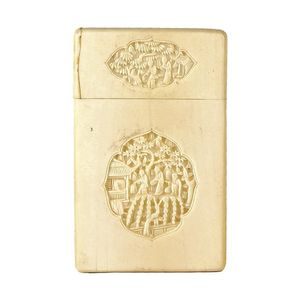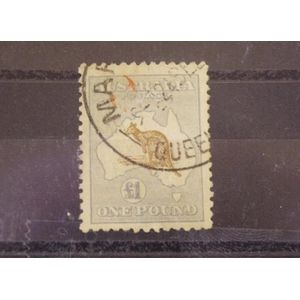Voyage to India and Journey through the Middle East
You must be a subscriber, and be logged in to view price and dealer details.
Subscribe Now to view actual auction price for this item
When you subscribe, you have the option of setting the currency in which to display prices to $Au, $US, $NZ or Stg.
- Embossed / Repousse - Embossing, also known as repousse, is the technique of decorating metal with raised designs, by pressing or beating out the design from the reverse side of the object.It is the opposite of chasing, where the decoration is applied from the front. An embossed or repoussed object may have chasing applied to finish off the design.
- Marbling - A descriptive term for a finish applied to plastic, ceramics, glass, plaster or wood to imitate the colours and characteristic markings of various marble types. For moulded items such as the first three above, the marbling is within the item.
Interiors and furniture were marbled from from the early 17th century to the late Victorian period. The craft was practiced by skilled decorators using a combination of brushes and sponges. Some of the finishes achieved were so realistic as to make it difficult to distinguish the marbled surface from the marble surface.
Marbling is also a term applied to a finish for paper as often seen in the front and endpapers of old books. The marbling is achieved by floating the colours on water and then transferring them to paper. However the marbling finish on paper, as with the marbling finish on plastics, with its multitude of colours has little resemblance to naturally occurring marble.
This item has been included into following indexes:
Visually similar items

A carved ivory card case, one side carved with two leaf shaped panels depicting figures in landscapes, the other side with a cruciform panel similarly carved. Repaired split. 11 x 6.7 cm

Australian one pound roo stamp used

The Way of the Whirlwind, Mary and Elizabeth Durack. Hardcover.Consolidated, 1941

A Chinese scroll painting, Republic period, ink and colour on paper depicting a scholar and pupil in a boat signed ShenXinhai, Haishang school (1855-1944), dated circa 1912 calligraphy and two seals, 33 x 39 cm. Provenance: Jiangsu antique store, 1980s
